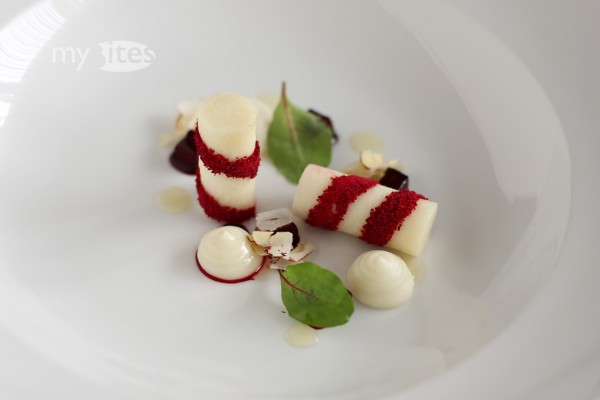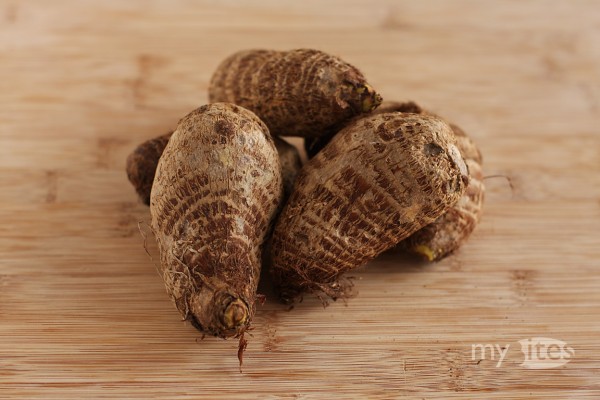In the last few months I’ve been reading the first two books of Modernist Cuisine on the train to and from work. To my opinion, it’s the very best book on cooking science currently available. At first the 20kg heavy cyclopedia might seem pretty expensive, but if you consider that it actually contains all the knowledge from your complete bookshelf, it’s quite a bargain. What I also like in the book is that it goes very much into detail on the science behind food and cooking techniques, but everything is explained in n easily readable and comprehensible way.
The chapter on cooking techniques and utensils in the second book was so inspiring to me, that I tidied up my kitchen and preserved some space for new kitchen equipment. One of the kitchen tools I acquired recently was a microwave. Yes, a microwave, the one and only kitchen tool that has been neglected in the past decades by several professional cooks. Only recently cooks started to use microwaves due to some of its unique applications. From a culinary perspective, a microwave has a lot more to offer. I read about these possibilities in the second book of Modernist Cuisine and I’ll feature each one of them in a post on my blog in the future. First I start with the simplest basic recipe, which is based on a recipe by the famous and well renowned chef Thomas Keller.
Microwave ovens aren’t designed only to (re)heat (wet) food, but it also dries several kinds of foods pretty quickly. For example many different vegetables can be turned into intense colored and flavored powders within only 30 minutes. The reipe is very simple and straightforward: You can use the dry pulp from juicing vegetables or finely grate your vegetable and squeeze the liquid thoroughly from it with your hands. Spread the finely grated dry vegetable thinly on the glass plate of your microwave and dry at the lowest setting for 30 to 40 minutes. The result is a vibrant colored and intensely flavored powder, which you might want to sift through a fine sieve to get a very fine powder. The original recipe by Thomas Keller used tomatoes, but the recipe works well for hard vegetables too, such as beets or carrots. The powders can be used both as decorations and as spices as well. Just think about how many different Hungarian dishes get their distinct flavor by the addition of paprika powder. Based on this, the potential of other vegetables powder seems endless.
For this dish I used a beet powder. Next to the red beets a vegetable called ‘eddo’ was the main ingredient of this starter. Eddo is somewhere between a Jerusalem artichoke and a potato. When peeled it has a slightly slimy touch, which turns into a starchy consistency similar to potatoes when cooked.Just like Jerusalem artichokes, eddos tend to fall apart completely when they are overcooked, so you should better watch your pot unless you want to prepare a puree. In this appetizer I used eddo in two different consistencies: as a puree blended with fresh creamy goat cheese and as tubes cooked al dente. I rolled the tubes crosswise in beet powder to get a nice pattern and flavor combination. Besides the beet powder I also baked a small beet and warmed it in reduced beet juice before assembling the dish. Beet sauces are usually flavored with pomegranate juice, syrup or molasses, but this time I used a special pomegranate vinegar, which balanced the sweetness of the beets much better. If you can’t find any eddos, substitute them by Jerusalem artichokes.
[amd-zlrecipe-recipe:71]


Well, it seems that I have to get me a microwave just as well :-)! Very inspiring post once again – a new method, a new ingredient, and a wonderful presentation. Thank you!
Thank you, Angelika! A few years ago if you’d asked me whether I own or plan to use a microwave, my answer probably would have been: no, never. Now that I’ve read about several interesting techniques, I’ve learnt that microwave oven aren’t made only for warming (or nuking) food. These powders for example are full of flavor, have a beautiful vivid color and are a great idea for utilizing leftovers, such as trimmings or the pulp from juicing vegetables.